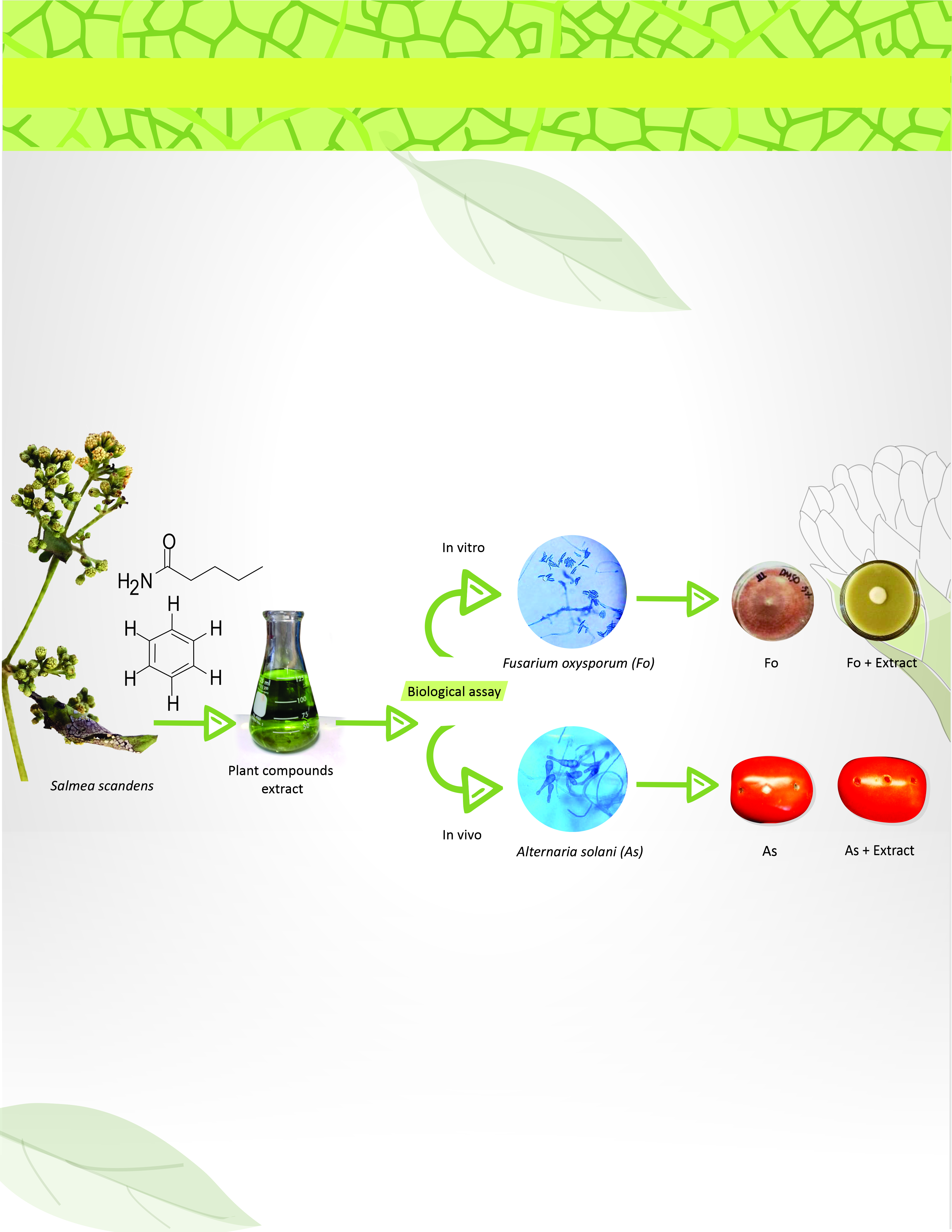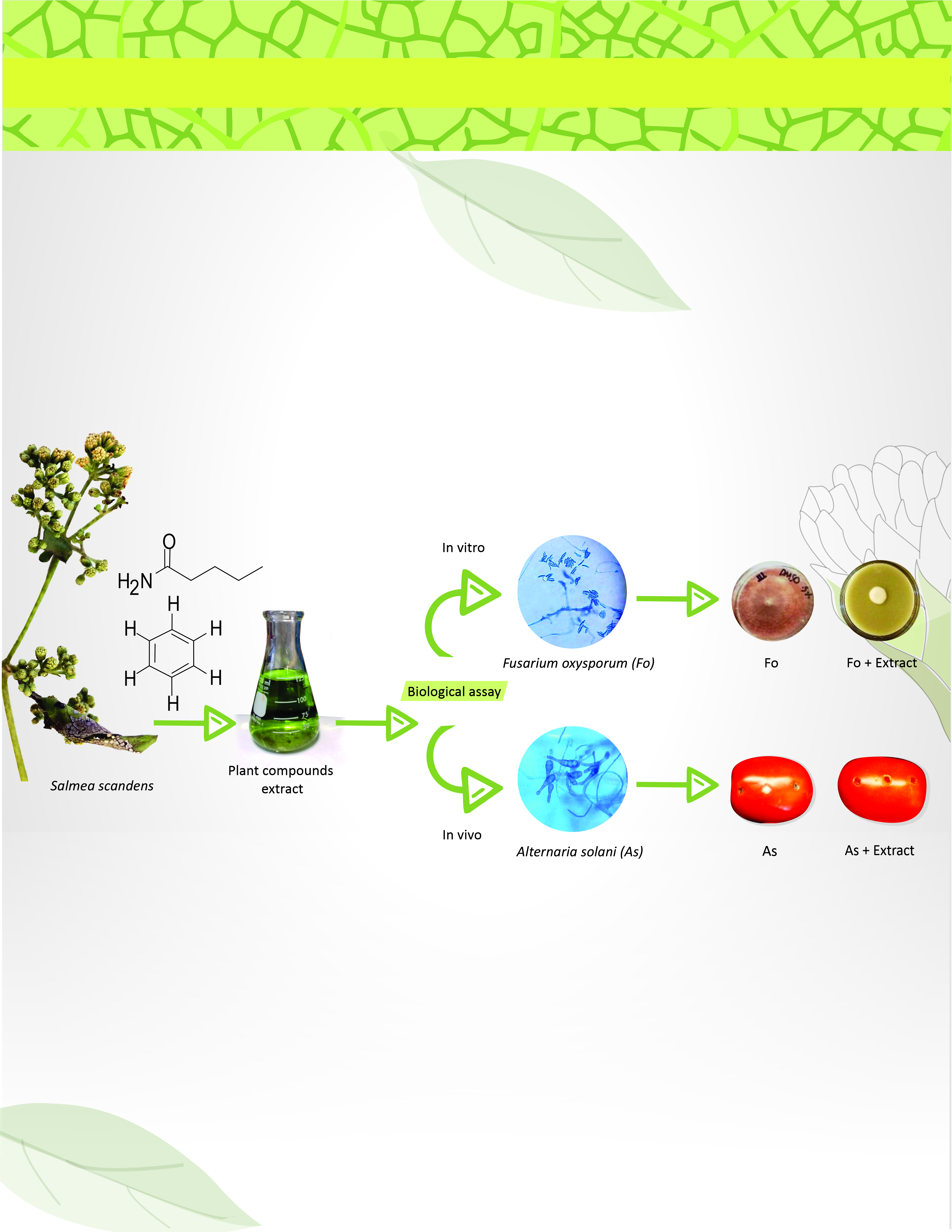Salmea scandens (Asteraceae) extracts inhibit the growth of Fusarium oxysporum and Alternaria solani pathogens of tomato
Salmea scandens extracts inhibit the growth of tomato pathogens
DOI:
https://doi.org/10.48162/rev.39.025Palabras clave:
antifúngico, FTIR, hongos de postcosecha, soxhlet, disolventesResumen

Tomatoes are affected by fungi of the genera Fusarium and Alternaria, reducing the quantity and quality of the fruit.Since plant extracts are an alternative for the control of phytopathogenic fungi, the antifungal effect of Salmea scandens extracts was evaluated against Fusarium oxysporum and Alternaria solani and the functional groups of the chemical constituents were identified.The aqueous extracts were obtained by three techniques (soxhlet, assisted ultrasound and maceration) and three solvents (water, acetone and ethyl ether), these were evaluated against F. oxysporum in poisoned medium and A. solani in tomato fruit. The functional groups were identified by the Fourier Transform Infrared Spectroscopy (FTIR) technique. The best extraction technique for S. scandenswas soxhlet with all three solvents. Maceration-acetone extracts at concentrations of 4000 and 5000 ppm showed increased antifungal activity against F. oxysporum and A. solani. The FTIR analysis confirmed the presence of carboxylic acids, aldehydes, ketones and aromatic compounds as the possible responsible for the antifungal activity.S. scandensextracts have a high potential to be used as a preventive treatment in the control of F. oxysporum and A. solani.
Highlights
- The highest mass/volume extraction efficiency yield was with the soxhlet technique using water as a solvent.
- Extracts obtained by maceration-acetone technique, caused the strongest Fusarium oxysporum inhibition.
- The maceration-acetone extract at 5000 ppm, showed higher inhibition of A. solani mycelial growth than the commercial fungicide Hymexazol.
Descargas

Descargas
Publicado
Cómo citar
Número
Sección
Licencia
Derechos de autor 2021 Revista de la Facultad de Ciencias Agrarias UNCuyo

Esta obra está bajo una licencia internacional Creative Commons Reconocimiento-NoComercial-CompartirIgual 3.0.
Aquellos autores/as que tengan publicaciones con esta revista, aceptan las Políticas Editoriales.










.jpg)




